【Unquenchable Lust and Unrequited Love: Women and Eroticism in Late Imperial Chinese Literature】
Twelve Illustrated Dust Jackets
Arts & Culture

From the collection of Martin Salisbury. Photograph: Simon Pask
We’ve all been told told not to judge a book by its cover, but what about judging a decade, an artistic moment, or a society? In his latest collection, The Illustrated Dust Jacket: 1920–1970, illustration professor Martin Salisbury traces the history of the book jacket from its origins as a simple dust guard for expensive bound books to its evolution as a promotional tool meant to catch the eye. The middle of the twentieth century marked a high point for the medium, as the period’s leading illustrators brought contemporary visual styles into readers’ hands. A selection of these covers, in chronological order, appears below along with Salisbury’s captions.
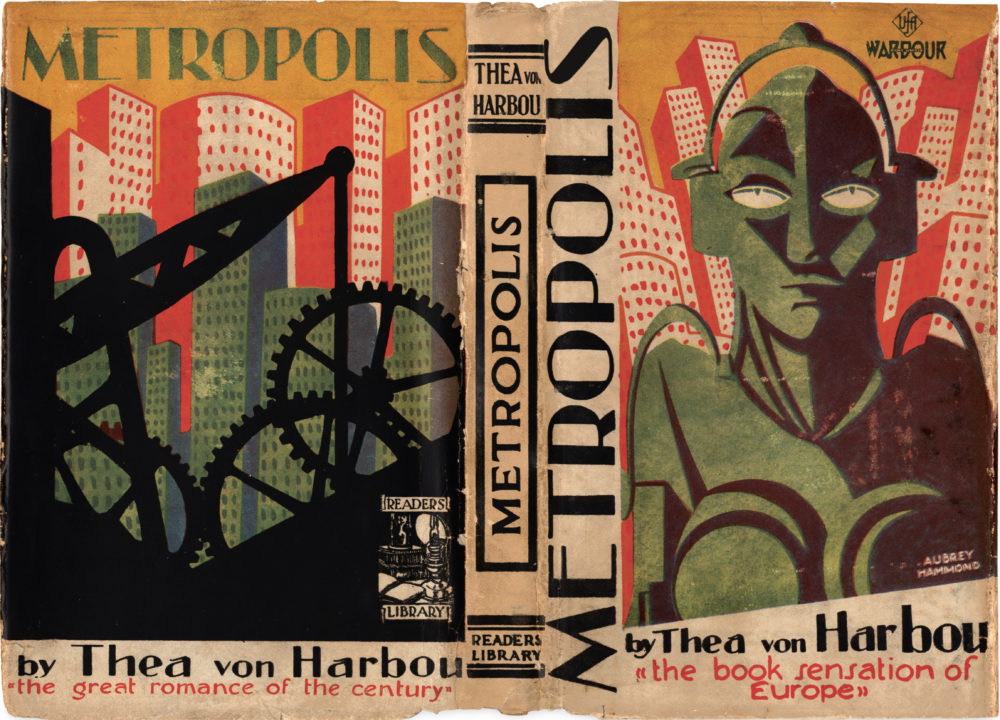
Aubrey Hammond, 1927.
One of the standout dust jackets of the twentieth century, Hammond’s design juxtaposes delicate color harmony with nightmarish vision.
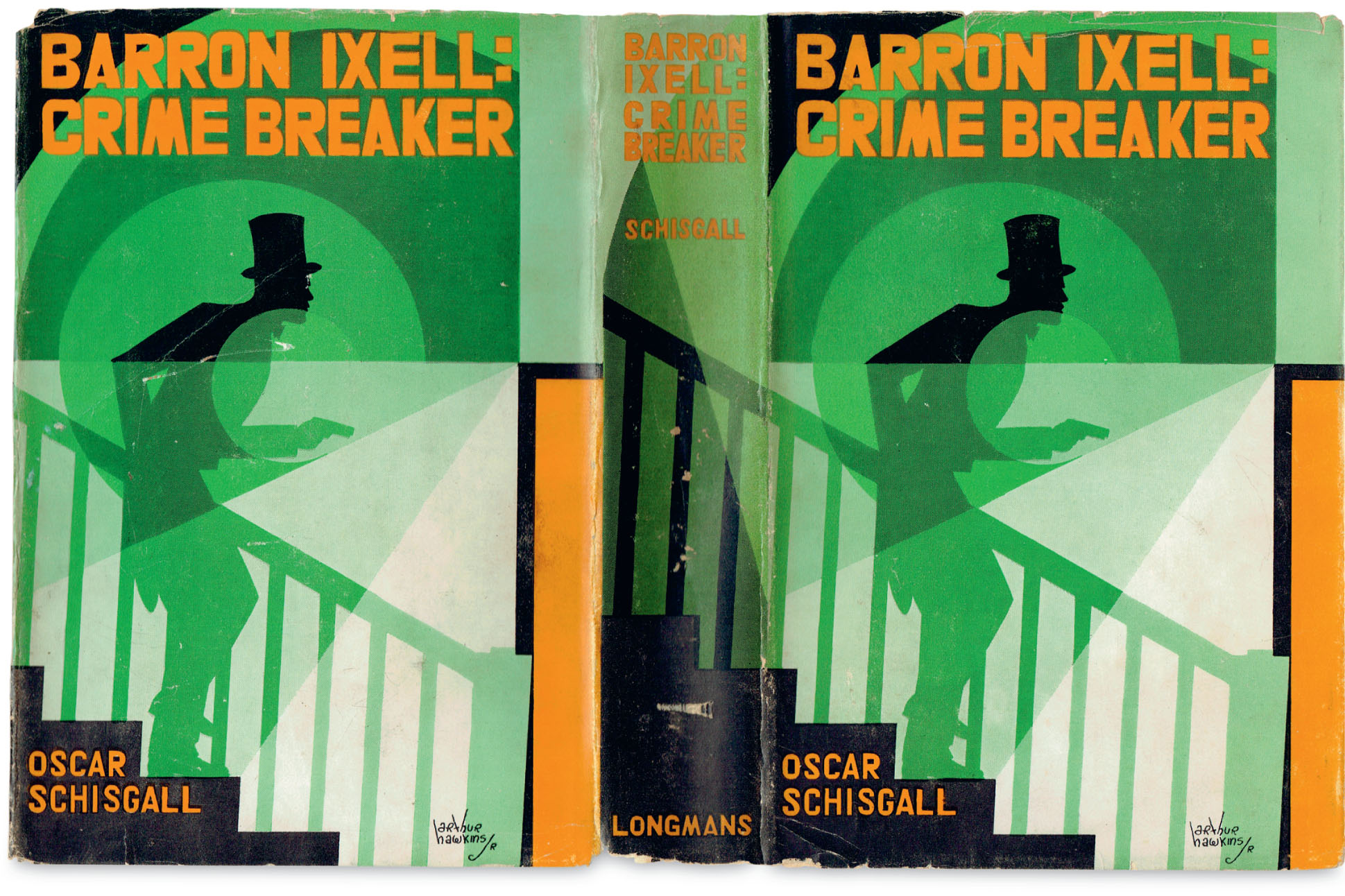
Arthur Hawkins Jr., 1929.
For this collection of stories featuring the intrepid international sleuth Barron Ixell, Arthur Hawkins’s highly theatrical design is repeated to create a full wraparound jacket.
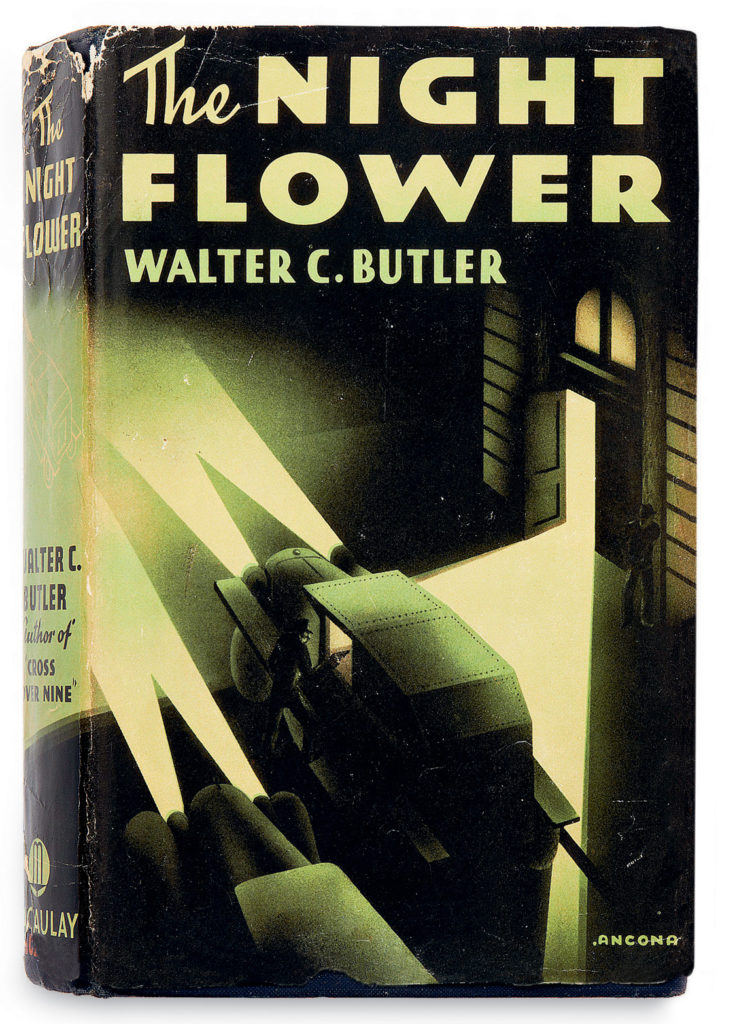
Ancona, 1936
The dramatic use of light and dark by Ancona (the nom d’artisteof Edward D’Ancona) immediately conveys that this is a mystery novel (one of only two written by Frederick Faust under this pseudonym) and echoes the film-noir genre of the period.
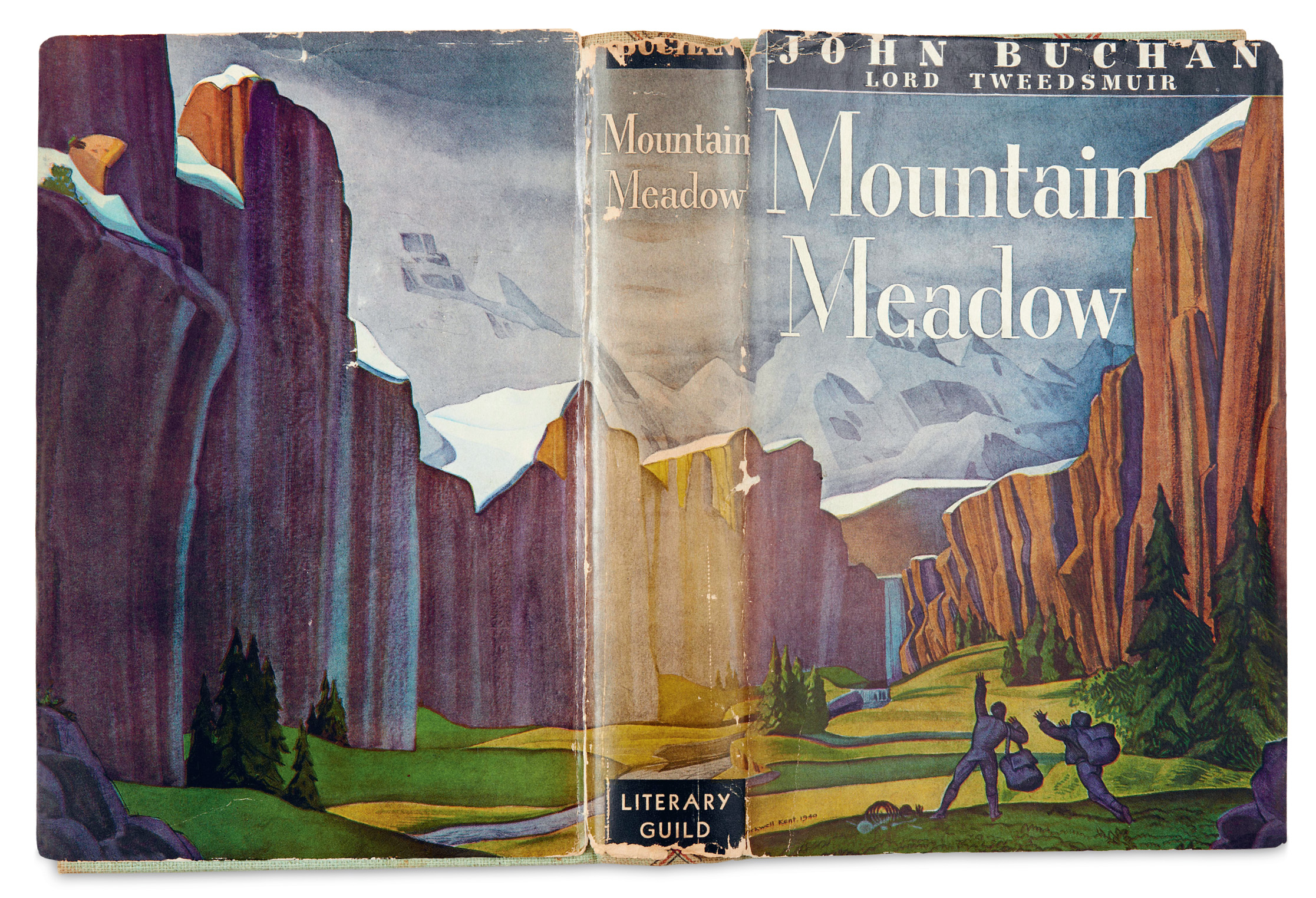
Rockwell Kent, 1941.
The artist’s lifelong preoccupation with the drama and beauty of landscape is given full rein in this spectacular wraparound design. The exaggerated, almost heroic, posing of the foreground figures suggests the influence of Soviet realism. John Buchan’s adventure story (published the year after his death) follows Sir Edward Leithen as he travels in the Canadian Arctic to investigate a man’s mysterious disappearance. No doubt Rockwell Kent’s own experiences in Alaska helped him to capture the feel of the novel’s locale. The jacket first appeared on the Houghton Mifflin (Boston) edition, published in the same year.
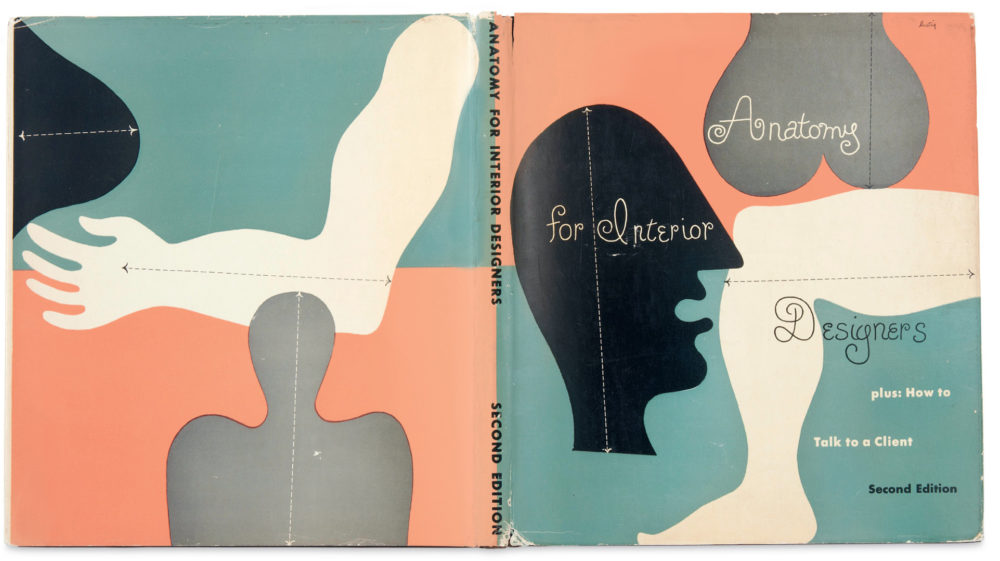
Alvin Lustig, 1948.
Alvin Lustig’s distinctive hand-rendered lettering was a key pictorial feature of the early editions of this striking jacket design. Sadly, in later editions, this was removed and replaced by a font—a rather ill-fitting Akzidenz-Grotesk Bold.

Barbara Jones, 1951.
Barbara Jones’s dust jacket for her own book is one of the most memorably idiosyncratic designs of the twentieth century. The existence of an early rough with the title English Vernacular Artsuggests some dialogue with the publisher.
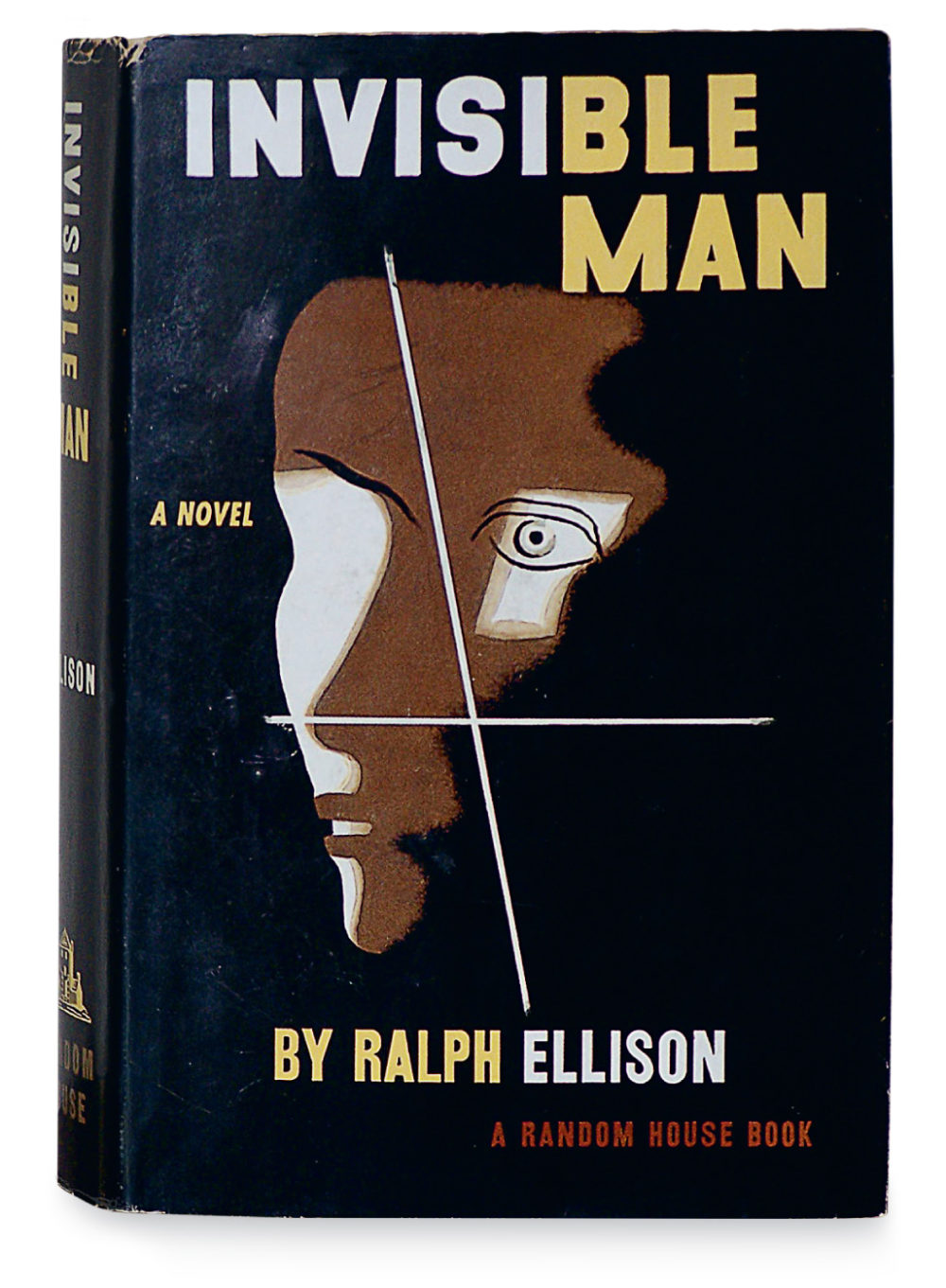
Edward McKnight Kauffer, 1952.
This is one of the most widely known of Edward McKnight Kauffer’s designs. For the novel, narrated by an unnamed black man, the jacket features a clever solution to the problem of how to make invisibility visible.
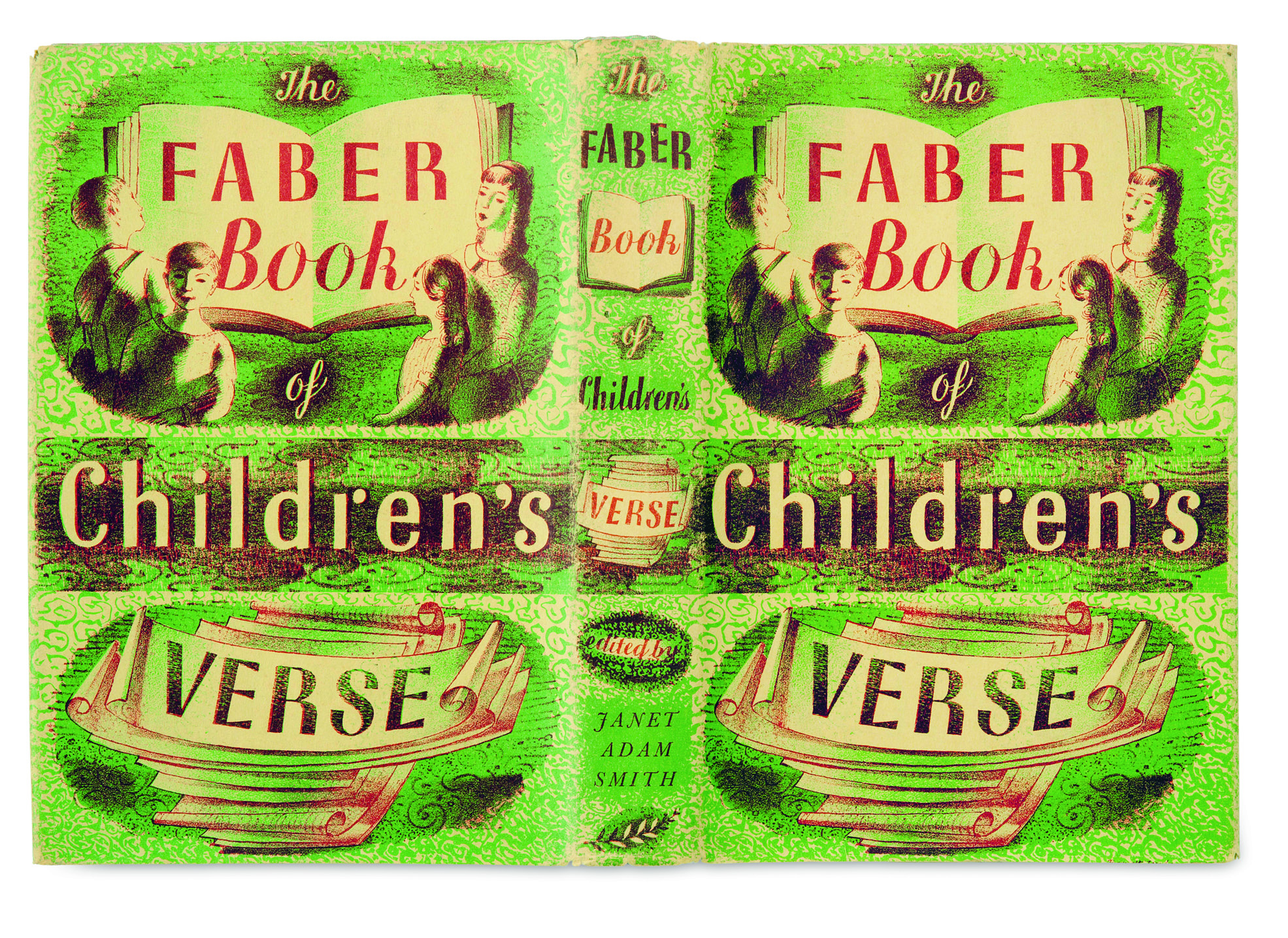
Barnett Freedman, 1953.
Many of Barnett Freedman’s book jackets were cleverly designed to repeat the front image on the back seamlessly. This example shows the artist at his best. The design is also repeated on the cover boards.
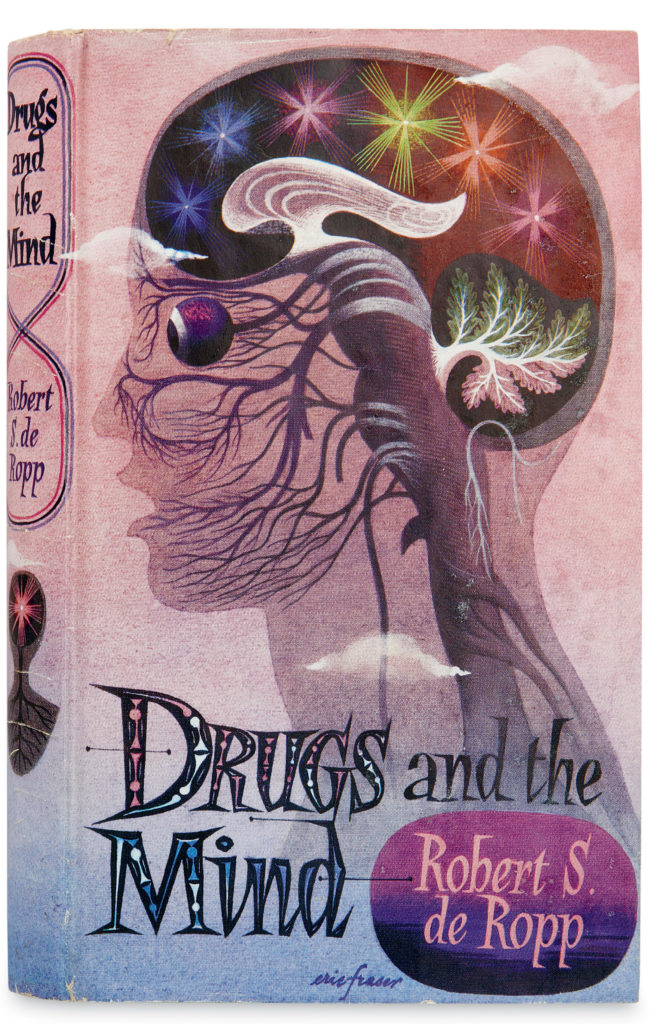
Eric Fraser, 1957.
The jacket is one of Eric Fraser’s most strikingly original designs. Dr. de Ropp’s first book introduced readers to the joys and mental tortures of ancient herbs and modern drugs.
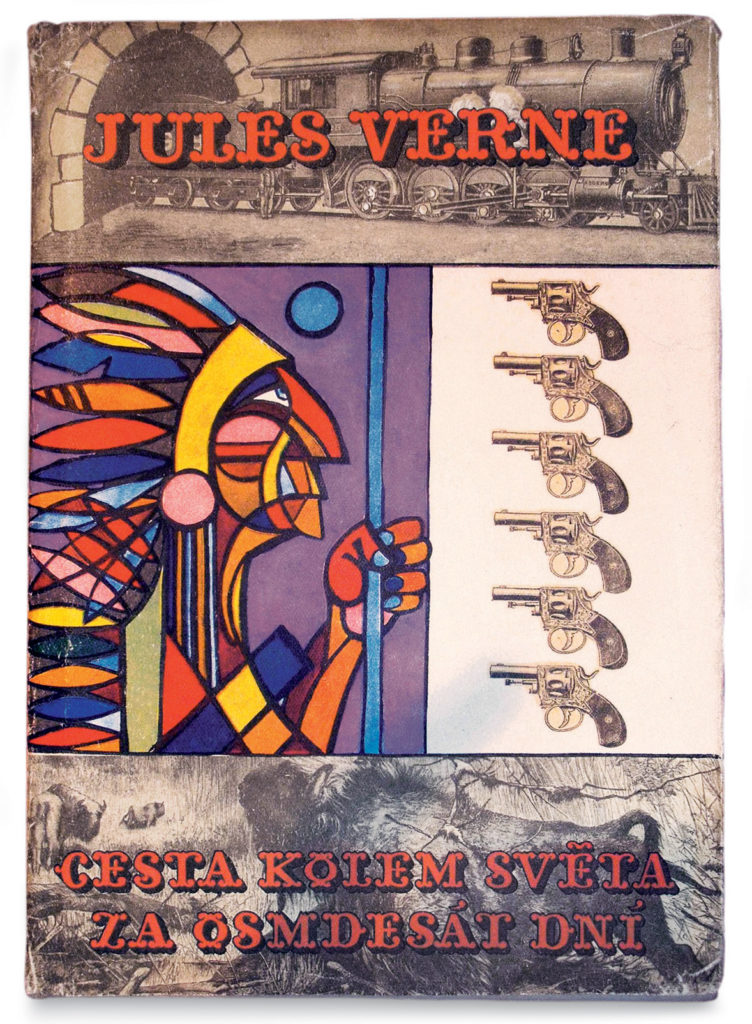
Adolf Hoffmeister, 1959.
Adolf Hoffmeister focuses on the American West in this design for Jules Verne’s classic. Using collage, he somehow manages successfully to balance imagery of widely differing graphic origin as well as the ornate type, which echoes the strong reds in the profile of the Native American.

Beth Krush, 1964.
Eudora Welty’s only book written specifically for children was illustrated throughout by Beth Krush, who also designed the jacket. The use of overprinting to maximize color separations and the cleverly integrated titles make this a particularly pleasing design.
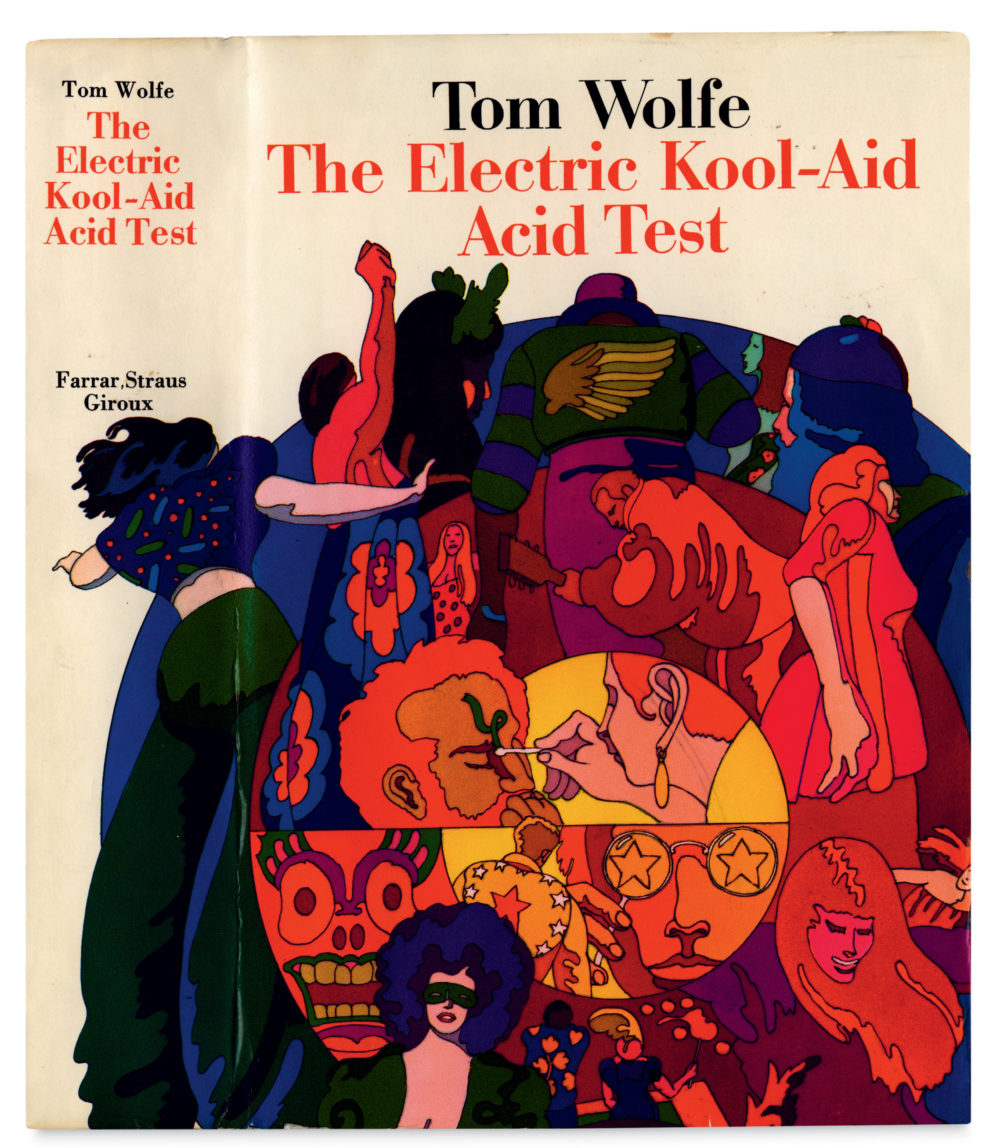
Milton Glaser, 1968.
It is difficult to imagine a more appropriate choice than Milton Glaser for the jacket design of Tom Wolfe’s account of late-sixties psychedelic-drug culture through the experiences of Ken Kesey and the Merry Pranksters.
Martin Salisbury is professor of illustration at Cambridge School of Art in Anglia Ruskin University.
All images excerpted from The Illustrated Dust Jacket, 1920–1970,by Martin Salisbury.
Search
Categories
Latest Posts
The Year in Tech: 2014 Top Stories
2025-06-27 00:09Joe Biden and Kamala Harris enlist cats to help them defeat Trump
2025-06-27 00:09Happy Birthday, Bram Stoker by Sadie Stein
2025-06-26 22:50Twitter so shocked at a TV host doing her job, the clip went viral
2025-06-26 22:40Optogenetics: A Virtual Reality System for Controlling Living Cells
2025-06-26 22:17Popular Posts
Mark Your Calendars: Plimpton! at DOC NYC by Sadie Stein
2025-06-26 23:49T. S. Eliot’s Widow Dies at Eighty
2025-06-26 23:30Bonfire Night by Sadie Stein
2025-06-26 23:22Featured Posts
Ms. Frizzle spotted at Science Marches across the globe
2025-06-27 00:24Where It All Went Wrong by Will Boast
2025-06-26 23:44Nimble Surrealism: Talking with Gabrielle Bell by Tobias Carroll
2025-06-26 23:43Donald Trump refuses to denounce QAnon at NBC town hall
2025-06-26 22:47Google's data center raises the stakes in this state's 'water wars'
2025-06-26 22:39Popular Articles
A sad day on Pornhub, as Ryan Creamer retires
2025-06-26 23:31A Crime Writer Turns to Crime, and Other News by Sadie Stein
2025-06-26 22:12Newsletter
Subscribe to our newsletter for the latest updates.
Comments (29795)
Wisdom Convergence Information Network
In Paris Agreement speech, Trump never acknowledged the reality of global warming
2025-06-27 00:06Global Information Network
Refusing Heaven by Drew Bratcher
2025-06-26 23:53Prosperous Times Information Network
WWDC 2023: Apple WatchOS 10 is changing how we use our smart watches
2025-06-26 23:03Warmth Information Network
WWDC 2023: Apple WatchOS 10 is changing how we use our smart watches
2025-06-26 22:52Transmission Information Network
Best free gift card deal: Get $10 Best Buy gift card with $100 Apple gift card
2025-06-26 21:55